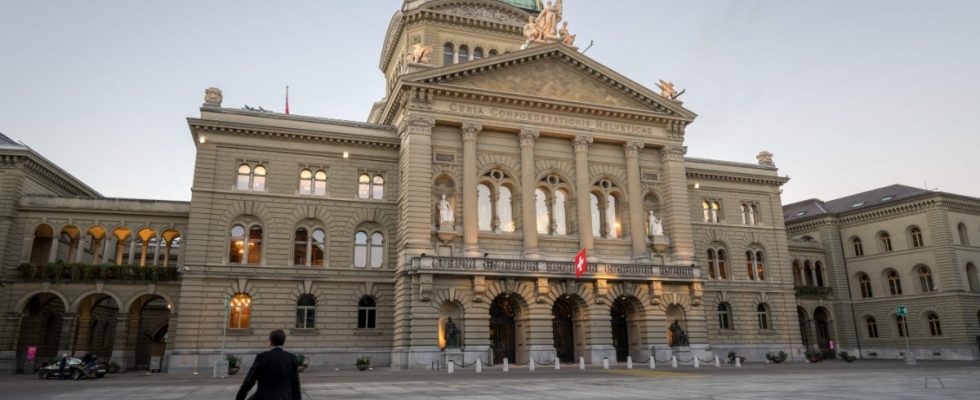The right-wing populist Swiss People’s Party (SVP) won a clear victory in Switzerland’s parliamentary elections on Sunday. According to the 8 p.m. projection by the Swiss Radio and Television Company (SRG), almost 29 percent of voters voted for the SVP, a good three percentage points more than in the last elections in 2019.
The party of the now 83-year-old Christoph Blocher, which – once again – relied almost entirely on the election campaign issue of immigration, remains by far the strongest political force in the country and could even surpass its record result from 2015 (29.4 percent).
Surveys had predicted an increase of several percentage points for the SVP after it achieved a comparatively poor result (25.6 percent) in 2019. Now the profits have probably been more significant than expected. A factor that was not yet reflected in the polls and that probably benefited the right-wing populists: the newly flared war in the Middle East, which may have fueled the feeling of insecurity and the desire for isolation.
In this respect, Swiss developments coincide with those in many neighboring European countries: many voters react to conflicts, crises and uncertainty by voting for parties that promote demarcation and a focus on the national. In Switzerland, where the right-wing party has been firmly in power for many years, it would have been surprising if they, of all people, had not benefited from this mood.
The second big trend of election Sunday is the Greens’ big losses. The first SRG projection predicted a share of 9.2 percent – a full four percentage points less than four years ago.
A sharp contrast to the 2019 “climate election”: Back then, the Greens gained six percentage points in one fell swoop and became the fourth strongest force in parliament. Together with the Green Liberals, who had also strengthened, they even formed the second strongest force behind the SVP.
But the green wave has clearly broken. According to the projections, the Green Liberals have also lost support: they are now at 7.2 percent (2019: almost eight percent).
The result does not bode well for the green dreams of a seat of government. The seven-member Swiss government, the Federal Council, is always elected by parliament in December after the elections and is traditionally made up of the four most important parties, broken down according to the so-called magic formula: two seats for the three strongest, one for the fourth strongest. In the past legislatures the composition looked like this: two seats each for the SVP, Social Democrats and liberal FDP, one seat for the center party (formerly CVP).
However, these rules are not fixed, but rather something like the customary law of Swiss politics – which is why the Greens failed in the government election in December 2019. The green trend first had to solidify, it was said in parliament at the time. Of course, there was also the fact that none of the parties represented in the Federal Council wanted to give up a seat. Now that the green parties are significantly weaker than in 2019, nothing is likely to change in the composition of the Federal Council.
What is interesting compared to developments in the rest of Europe is the relatively good performance of the Social Democrats (SP). According to projections, they remain the second strongest party in parliament with 17.5 percent and were able to improve slightly on their 2019 result (16.8 percent). This is also remarkable because the party is led by its leadership duo Mattea Meyer and Cédric Wermuth – two “very loud and very left-wing socialists”, as the magazine des Tages-Anzeiger wrote – anything but slipped into the middle. Recently, the SP even concentrated on classic left-wing issues such as rents, wages and the high health insurance costs.
According to the projections, the shifts in the center and the FDP are similarly small as in the SP, which are therefore on par: the center party gains slightly, the FDP loses slightly, both are at 14.6 percent.

